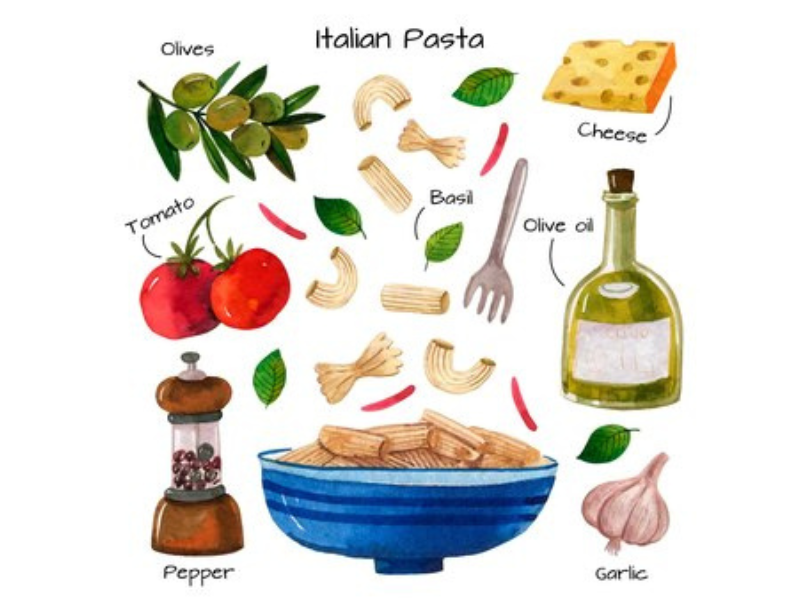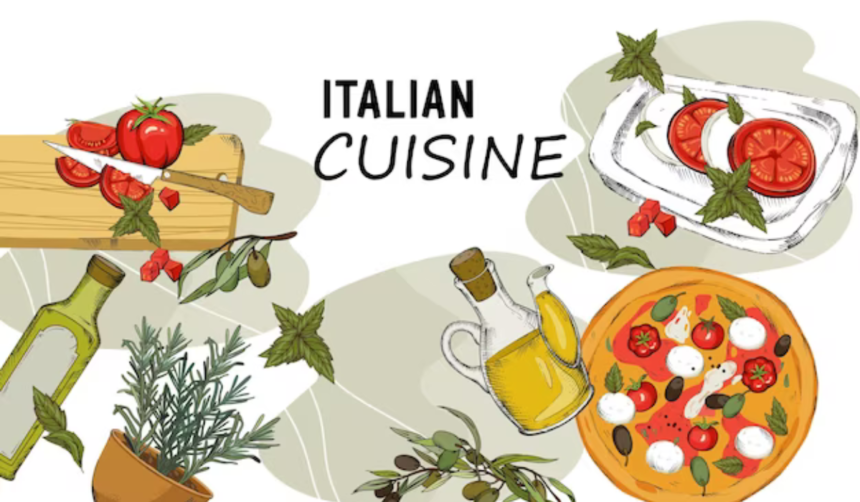From Farm to Table: The Timeless Traditions of Italian Cooking
Italian cuisine is known for its fresh ingredients, simple yet flavorful dishes, and strong ties to the land. The farm-to-table movement, which emphasizes using locally sourced and seasonal ingredients, has deep roots in Italian cooking. In this article, we will explore the timeless traditions of Italian cooking, from the farms where the ingredients are grown to the tables where these delicious dishes are enjoyed.
1. The Importance of Fresh Ingredients
Italian cuisine is all about using the freshest ingredients possible. From ripe tomatoes and fragrant herbs to high-quality olive oil and artisanal cheeses, each ingredient plays a crucial role in creating the rich and vibrant flavors that Italian food is known for. By sourcing locally and seasonally, Italian cooks are able to showcase the natural flavors of their ingredients without the need for excessive seasoning or processing.
2. The Role of Farmers in Italian Cuisine
Farmers are the backbone of Italian cuisine, providing the fresh produce, meats, and cheeses that form the foundation of many classic dishes. From the rolling hills of Tuscany to the sun-drenched coast of Sicily, farmers across Italy take pride in the quality of their products. By cultivating heirloom varieties of vegetables, raising free-range animals, and producing traditional cheeses, these farmers ensure that Italian cuisine remains rooted in its agricultural heritage.
3. The Italian Practice of Agriturismo
Agriturismo is a uniquely Italian concept that combines agriculture and tourism. Many farms and rural estates in Italy offer accommodations, activities, and dining experiences for visitors looking to immerse themselves in the country’s culinary traditions. Guests can participate in cooking classes, farm tours, and wine tastings, allowing them to gain a deeper appreciation for the connection between food and the land.
4. The Diversity of Italian Cuisine
Italy is a country of diverse landscapes, climates, and culinary traditions. Each region has its own unique ingredients, techniques, and dishes that reflect the local culture and history. From the seafood-rich cuisine of coastal regions like Liguria and Campania to the hearty fare of the Alpine valleys in the north, Italian cooking is a tapestry of flavors and influences that tell the story of the land.
5. The Slow Food Movement
The Slow Food movement, founded in Italy in the 1980s, promotes the preservation of traditional foodways, the protection of biodiversity, and the promotion of sustainable farming practices. By advocating for local, seasonal, and ethically sourced ingredients, Slow Food seeks to counteract the negative effects of industrial agriculture and fast food on both the environment and human health.
6. The Italian Love Affair with Pasta
Pasta is perhaps the most iconic Italian food, enjoyed in countless shapes, sizes, and sauces across the country. From the al dente spaghetti of Naples to the stuffed ravioli of Emilia-Romagna, each region has its own beloved pasta dishes that reflect the local ingredients and culinary traditions. Whether served with a simple tomato sauce or a complex ragu, pasta is a versatile and satisfying staple of Italian cuisine.

7. The Art of Traditional Italian Cooking Techniques
Italian cooking is characterized by a few key techniques that are used to bring out the best in each ingredient. From slow-roasting meats to coaxing out the flavors of garlic and herbs in a savory sauce, Italian cooks have mastered the art of simplicity and restraint. By letting the natural flavors of the ingredients shine through, they create dishes that are both delicious and satisfying.
8. The Ritual of Sunday Lunch
In Italy, Sunday lunch is a time-honored tradition that brings families together around the table to enjoy a leisurely meal of multiple courses. Starting with antipasti, followed by pasta, a main course, and dessert, Sunday lunch is a celebration of good food, good company, and good conversation. The dishes served may vary depending on the region, but the spirit of conviviality and abundance remains the same.
9. The Influence of Italian Food on Global Cuisine
Italian cuisine has had a profound impact on the way people eat around the world. From pizza and pasta to gelato and espresso, Italian dishes are beloved for their simplicity, freshness, and depth of flavor. Italian restaurants can be found in nearly every corner of the globe, offering diners a taste of la dolce vita wherever they may be.
10. The Future of Italian Farm-to-Table Cooking
As the farm-to-table movement continues to gain popularity, Italian cooks are finding new ways to celebrate their culinary heritage while embracing modern innovation. From rooftop gardens in urban restaurants to community-supported agriculture programs in rural areas, there are many opportunities for Italians to connect with the land and support local farmers. By prioritizing sustainability, seasonality, and tradition, Italian farm-to-table cooking is poised to thrive for generations to come.
11. Tips for Cooking Italian Farm-to-Table Dishes at Home
If you’re inspired to bring the flavors of Italy to your own kitchen, there are a few key tips to keep in mind. Start by sourcing the best quality ingredients you can find, whether from a local farmers market, specialty grocer, or online retailer. Look for seasonal produce, artisanal cheeses, and high-quality meats to ensure that your dishes are as flavorful and authentic as possible.
12. Traditional Italian Recipes to Try
There are countless classic Italian dishes that you can try at home, from the simple and comforting to the complex and indulgent. Start with a few basic recipes like spaghetti al pomodoro, risotto alla Milanese, or pasta cacio e pepe, then work your way up to more challenging dishes like osso buco, lasagna Bolognese, or tiramisu. Experiment with different ingredients and techniques to create your own unique interpretations of these timeless recipes.
13. The Joy of Sharing Food with Loved Ones
In Italian culture, food is more than just sustenance – it is a way to express love, friendship, and hospitality. Whether cooking a meal for your family, hosting a dinner party for friends, or sharing a picnic with your partner, the act of preparing and sharing food brings people together in a meaningful and nourishing way. Embrace the spirit of conviviality and connection that is at the heart of Italian cooking.
14. The Timeless Appeal of Italian Cuisine
Italian cuisine has stood the test of time because of its emphasis on quality ingredients, simple techniques, and strong ties to the land. By celebrating the traditional flavors and practices of Italian cooking, we can savor the rich history and culture that have shaped this beloved culinary tradition. From farm to table, Italian cuisine offers a taste of la dolce vita that is as timeless as it is delicious.
15. Conclusion
Italian cooking is a celebration of the land, the seasons, and the people who cultivate and prepare its ingredients. By honoring the traditions of farm-to-table cooking, we can experience the richness and diversity of Italian cuisine in all its delicious glory. From the rolling hills of Tuscany to the bustling trattorias of Rome, the spirit of Italian cooking is alive and well, inviting us to savor every bite with gratitude and joy. Buon appetito!
FAQs about “From Farm to Table: The Timeless Traditions of Italian Cooking”
- What distinguishes “From Farm to Table: The Timeless Traditions of Italian Cooking” from other Italian cookbooks? “From Farm to Table” offers a unique perspective on Italian cooking by highlighting the timeless traditions and culinary heritage that emphasize fresh, locally sourced ingredients. It celebrates the connection between food, culture, and community in Italy.
- Which Italian culinary traditions are explored in this book? This book explores a wide range of Italian culinary traditions, including the importance of seasonal ingredients, the art of preserving, traditional cooking techniques, and the cultural significance of food in Italian society.
- Are specific Italian dishes featured in “From Farm to Table”? Yes, “From Farm to Table” features a curated selection of classic Italian dishes, such as risotto, pasta, pizza, antipasti, and desserts. Each recipe is accompanied by background information, cultural insights, and tips for sourcing the best ingredients.
- How does this book celebrate the farm-to-table philosophy in Italian cooking? This book celebrates the farm-to-table philosophy by emphasizing the importance of using fresh, locally sourced ingredients in Italian cooking. It explores the relationship between farmers, producers, and chefs, highlighting the seasonal bounty that inspires Italian cuisine.
- Can readers expect to gain insights into the cultural and historical context of Italian cooking in this book? Absolutely! “From Farm to Table” delves into the cultural and historical context of Italian cooking, exploring its origins, influences, and evolution over time. Readers will learn about the traditions, rituals, and customs associated with Italian culinary heritage, providing a deeper understanding of Italy’s rich food culture.
Advantages:
- Evocative imagery: The title “From Farm to Table: The Timeless Traditions of Italian Cooking” conjures images of fresh, locally sourced ingredients and traditional culinary practices, immediately capturing the reader’s interest.
- Emphasis on tradition: By highlighting “timeless traditions,” the title suggests a focus on authentic Italian cooking methods and recipes passed down through generations, appealing to readers interested in exploring the cultural and historical aspects of Italian cuisine.
- Gastronomic exploration: Readers can anticipate learning about a variety of Italian dishes, ingredients, and cooking techniques, providing them with a comprehensive overview of the diverse culinary landscape of Italy.
- Practicality: By featuring traditional Italian cooking, the title appeals to readers interested in preparing authentic and delicious Italian dishes, providing them with recipes, tips, and techniques.
- Sustainability focus: The title’s reference to “Farm to Table” suggests an emphasis on using fresh, locally sourced ingredients, promoting sustainable and environmentally friendly cooking practices.
Disadvantages:
- Potential oversimplification: While the title emphasizes “timeless traditions,” it may oversimplify the complexity and diversity of Italian culinary traditions, overlooking regional variations and cultural nuances.
- Lack of specificity: The title does not specify which dishes, ingredients, or traditions will be explored, leaving readers uncertain about the scope of the content.
- Accessibility of ingredients: Some traditional Italian dishes may require specific ingredients that are difficult to find outside of Italy or major culinary hubs, limiting the practicality of the recipes for some readers.
- Dietary restrictions: Traditional Italian cuisine often includes ingredients like cheese, cured meats, and wheat-based products, which may not be suitable for individuals with dietary restrictions or preferences, potentially alienating some readers.
- Cultural appropriation: Without proper context and understanding, celebrating Italian cooking traditions could risk appropriating cultural elements without acknowledging their significance or respecting their origins.
















